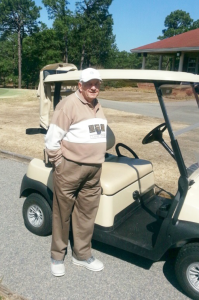Learning To Be A Friend
16 November 2016
 Across my almost 70 years of living, I have been lousy at initiating and nurturing friendships. It was not until I worked with my father to write a book about his life that I came face-to-face with this fact of my being. Talking with Daddy about his treasured friendships and then compiling the chapter on that topic caused me to assess my status in the friendship arena. I committed to learn to be much better at initiating and nurturing friendships.
Across my almost 70 years of living, I have been lousy at initiating and nurturing friendships. It was not until I worked with my father to write a book about his life that I came face-to-face with this fact of my being. Talking with Daddy about his treasured friendships and then compiling the chapter on that topic caused me to assess my status in the friendship arena. I committed to learn to be much better at initiating and nurturing friendships.
My current and most powerful, most effective friendship development training installment was not planned. On a pleasant weather day in April 2015, I was playing golf with a Canadian fella at Stryker Golf Course in Fayetteville. At some point, we realized there was a player behind us. We kept calling for him to play our current hole and we would wait for him to move ahead of us. When he kept refusing, we stopped and waited for him to catch up.
The then 85 year-old player was Frederick O. Byrom. He explained that, due to medical issues, including eleven surgeries, he needed to pace himself and did not want to pass us. He agreed to play the remaining holes with us. He said it was not good for him to play alone and, for a while, the course management required that he play with at least one other person. From that day to now, Fred and I have golfed together 4-5 mornings a week.
During these past 18 months, I have learned more about this now 87 year old than I realized or expected. It did not happen because of any interviews…just walking a golf course and talking. Fred was born in Alabama and lived there until age 20, when he joined the U.S. Army. Those early years in Alabama were difficult. Circumstances were such that he started buying his own clothes at age nine. He earned the money by cutting the grass of neighbors with a sickle. (Merriam-Webster Dictionary describes a sickle as “a tool with a curved metal blade attached to a short handle that is used for cutting grass, grain, etc.”) His pay was normally a “nickel” per yard. While still a young boy, he purchased a lawnmower from a local store on credit and earned the money to pay that account in full. His lawn-cutting business prospered.
There was a point in his youth when Fred worked with his grandfather in logging. It was rough work and he earned 50 cents a week. He was living with his grandfather because he had run away from home. Fred had to wear used clothing from a young uncle because his grandfather’s position was that since he was paying him, Fred, should buy his own clothes. When there was no hand-me-down jacket and Fred desperately needed one, he purchased a jacket for $2.50 by paying 50 cents down and then 50 cents a week until that account was paid in full.
Starting at age 14, and for the next year until a truancy officer found him, Fred worked at a restaurant. In that year, he progressed from dishwasher to chef. Married at age 17, he worked eight hour shifts at a cotton mill and then four more hours in construction each day. At age 20, he joined the Army. This decision led to twenty-two and a half years of service at duty stations in the U.S., South Korea, Italy, Germany, Thailand, and Vietnam. After a prolonged illness, Fred’s first wife died, leaving him with two young children to rear. He later married again. Fred clearly loves, and is concerned for, his wife and family.
When Fred Byrom retired from the Army, his monthly retired pay was $400. That meant he had to keep producing income. Without hesitation, he moved on to operate an accounting firm and a trucking company. Consider all that is outlined above regarding Fred’s early years. He is the very embodiment of determination. Our routine is to walk nine holes of golf, while each of us pulls or pushes a cart. No motorized carts. The 9th green is seriously uphill. Every trip to that green is physically demanding for Fred and even for me. Approaching that 9th green, I sometimes say to Fred, “We can quit. Don’t push yourself on that hill.” His answer is always a quiet “no.” The exception was 28 October 2016, when he said, “No. If I quit, that will be it.” Determination personified.
Fred knows golf and knows how to teach it. One day, when I was having a horrible round, he started instructing me. When my game continued to nosedive, he said, “Never learn to play golf while playing golf on a course.” I took that statement to mean there is a time for playing and a time for separately assessing one’s game, thinking deeply about it, and focusing while practicing. Life is no different. We should be careful not to get so caught up in the process of living that there is no assessing, no real thought regarding choices, and no considering probable consequences of our choices.
Fred has helped me improve my golf game beyond what I ever thought possible 18 months ago. Unlike many others, he knows when to instruct and when to shut-up. He encourages, but is direct in pointing out failure.
Well, that’s 886 words about Fred Byrom in a column that is supposed to be about me learning to be a friend. It is on point. Of the many friendship insights I have gained from time with Fred, three come to the forefront in this moment of reflection. The first is that meaningful friendships absolutely require the potential friends coming to know one another’s life journey. That process is most successful when it is unplanned…when it just happens. I know a good bit about Fred’s journey, as he does about mine, from just walking together on a golf course.
Second, I did not offer or ask to play golf with Fred because I was looking to build a friendship. I did it because, in light of his medical history, Fred needed someone to be on the course with him. I am not holding myself up as some “Good Samaritan”, as reflected in that parable told by Jesus and recorded in Luke 10:25-37. My takeaway is that when people act out of concern for one another and, in the process, come to know and appreciate each other’s life journey, without seeing it coming, strong friendships happen and both parties are better because of it.
Finally, when these first two conditions are present, it allows for getting the right perspective of experiences that might otherwise end badly. Time and time again, Fred has told me how to successfully hit out of a sand trap. Normally it takes me several attempts because I do not follow Fred’s instructions. Sand traps are those sand-filled areas on a golf course. During a recent round, I hit into a trap. On the first try, I hit out of the trap and into one on the other side of the green. I hit out of the second trap on the first try and started to celebrate that, at least, I got out of two traps on the first try.
Fred looked at me and said, “I am disappointed in you.” He knew if I had followed his often repeated instructions, I would not have gone into the second trap. There is currently tremendous racial division and tension in America. Couple this with the deafening cries of racism that occur when there is an even remotely questionable negative interaction between black and white individuals or groups. If controlled by this atmosphere, I would have responded in a totally unjustified manner. My response might have been, “This white man is a racist and is putting me down because I am black.” The thought never crossed my mind because I know Fred Byrom’s story and he knows mine; we have a friendship born of a desire to help, not of a plan to be friends. I looked at Fred that day and was thankful that he cared enough to call me to account…even on playing golf.
This is just a bit of what I have learned on the golf course with Fred Byrom about being a friend. Doing some of this across America, across the canyons that divide us, might help to heal our nation and save us from ourselves.





Leave a Reply